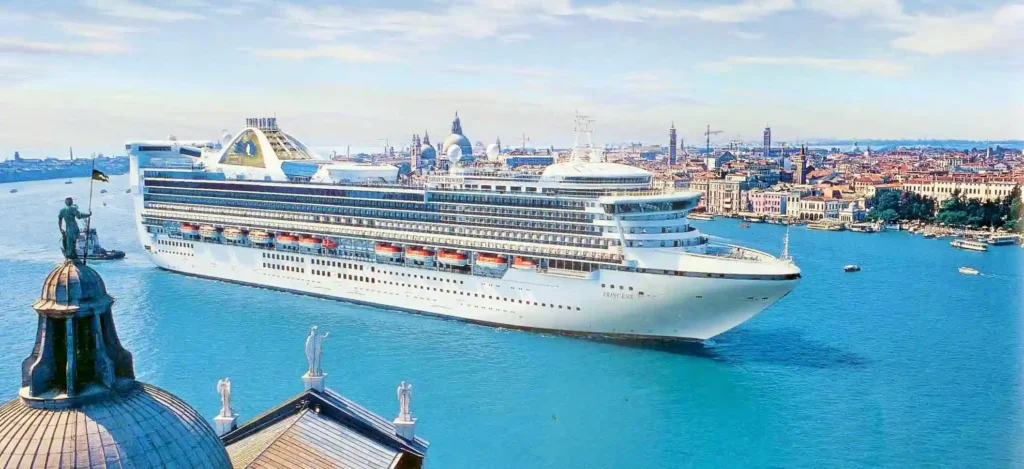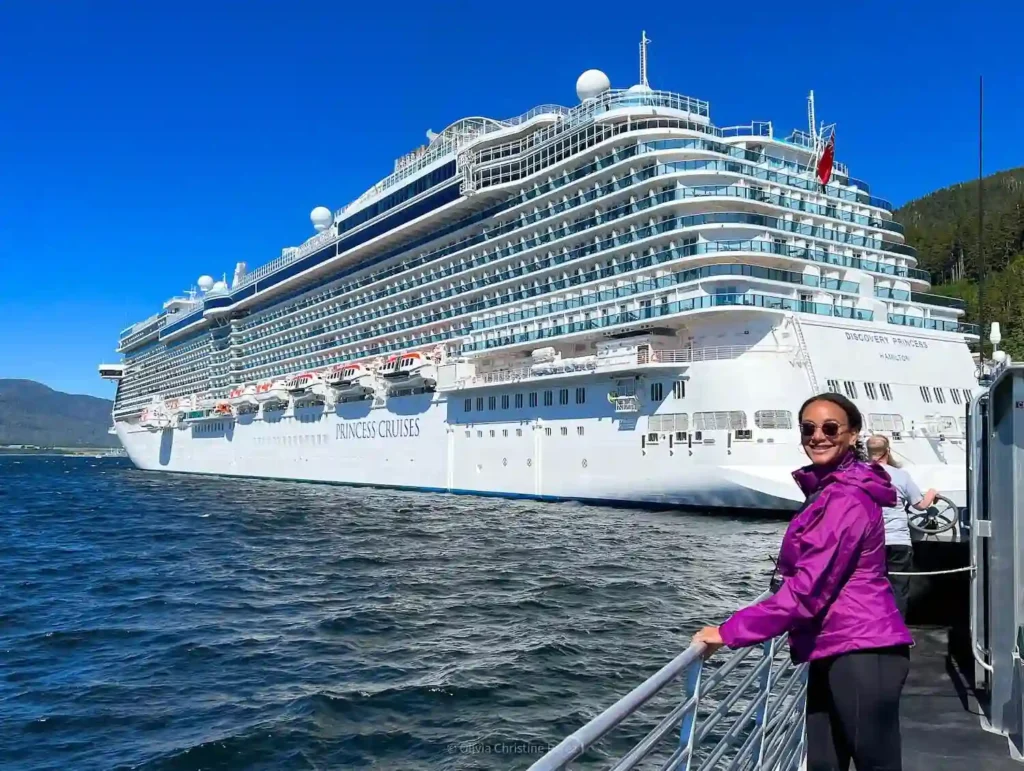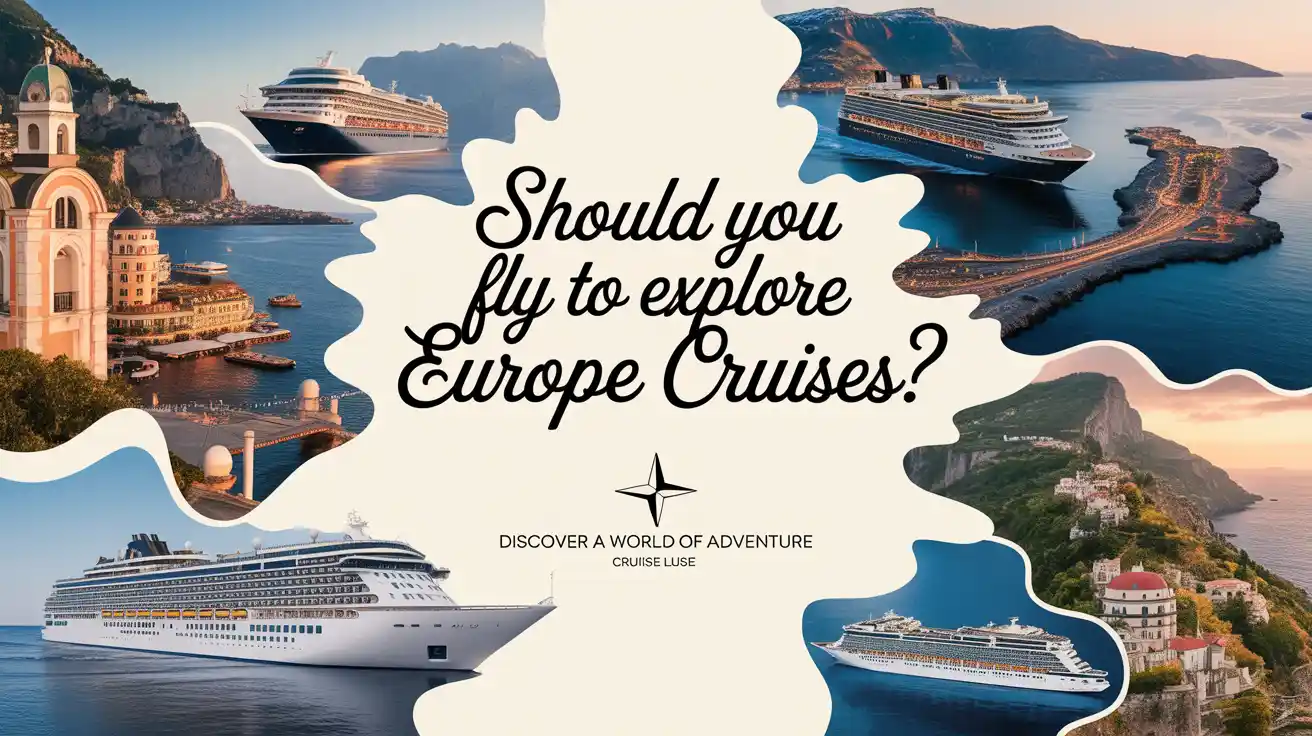Should You Fly to Explore Europe Cruises? Updated
If you’ve been daydreaming about sailing past ancient coastal towns or sipping something fizzy while drifting between alluring cities… yeah, Europe by cruise sounds magical.
But then there’s the part no one really glamorizes: how do you actually get there? For most of us living in North America, that means flying.
should you fly to explore Europe cruises? Discussing in Detail
It’s a reasonable question. A layered one, honestly. Because cruising through Europe sounds like the perfect combo of relaxation and exploration. But flying halfway across the world to do it? That adds a few more moving parts.
Let’s wander through this idea together.
Why People Even Consider Flying for a European Cruise

It’s pretty simple: Europe’s geography makes it wildly cruiseable. Think of all the capital cities, medieval towns, and cliff-hugging villages packed along rivers and coastlines.
There’s Northern Europe with its haunting fjords and Baltic ports. Then Mediterranean cruises bring sunshine, Greek salads, and ancient sites. Different flavors, but all tempting in their own way.
Cruise companies know this. Royal Caribbean Cruises, Celebrity Cruises, Holland America Line… they’ve all carved out serious routes that wind through some of Europe’s most postcard-worthy areas.
But most of those ships? They don’t leave from your backyard.
Getting There: The Flying Part

Here’s where your travel style starts to matter. If you’re the kind of person who wants everything laid out—maybe even all-inclusive, maybe resort-style vacations—you’ll want to plan your flight like part of the cruise. Same rhythm, same vibe.
Others? They piece it all together. Flights, hotels, maybe a walking tour or RS tour squeezed in before embarkation day. There’s no one-size-fits-all, which is kind of the beauty of it. But also the headache.
The biggest Cruise Ports in Europe—Barcelona, Rome (Civitavecchia), Amsterdam, Athens (Piraeus), and Southampton—are usually near a major city center or well-connected train station.
You’ll likely land at an international airport and then… yeah, some logistics. A shuttle. A train. Maybe a friendly but very direct taxi driver.
That in-between part can feel blurry.
What Flying Unlocks That You’d Miss Otherwise

Flying opens up the entire continent. You could hop onto a Mediterranean cruise and glide past Croatia’s coastline, or fly north for a Baltic cruise that dances through Denmark, Sweden, Estonia, even Russia (depending on your route).
And then there are River Cruises, which are their own vibe entirely. Floating gently along the Danube or the Rhine… there’s a slow joy in that. You stop in the center of town. Think Vienna, Budapest, Strasbourg. No bus tours needed to reach the action. Just step off, and you’re basically there.
Flying also lets you stretch the trip. Maybe tag on a few land-based vacation days before or after the cruise. Want to explore Paris? Or spend a night at MacCallum House before catching a ship in Copenhagen? It’s all fair game.
The Downsides (Because There Are Always Some)

Let’s not sugarcoat it. Flying is exhausting. Jet lag is real, and flight delays happen. If your cruise ship leaves the next morning and your flight’s running late? That’s stress you do not need.
Plus, not all cities make it easy. Some cruise ports aren’t as close to the city center as they sound. Rome’s port is actually in Civitavecchia, about an hour and a half from the capital city. And Athens’ port (Piraeus) isn’t exactly next door to the Acropolis either.
Also, cost. Flights to Europe can eat a large chunk of your budget, especially during summer. Add in hotel stays, airport transfers, and… yeah, it adds up.
So while ocean cruises in Europe feel like a dream, they’re not necessarily cheap dreams.
But Still… the Experience

Here’s the thing. You glide into Santorini at sunrise, cliffs lined with blue houses glowing under soft light. Or you dock in Copenhagen and bike to a canal-side café before the crowds hit. Those moments? Kinda worth the travel day.
There’s something unexpectedly soothing about unpacking once and waking up in a new European city each day. Shore excursions, from walking tours to bus rides to hidden little Shore Experiences, let you explore without planning everything. You get tastes of places—sometimes literally, like fresh focaccia in Genoa or pierogi in Gdansk.
If you pick your cruise line based on what feels right—maybe Royal Caribbean if you love American sports and entertainment, or Holland America if you want quiet mornings and cultural talks—then the ship kind of becomes your home base. Floating hotel, really.
Accessibility and Comfort Considerations

If accessibility for wheelchairs is a concern, modern cruise ships have made strides. Same with airports. But in between—train stations, taxis, even cobblestoned coastal towns—can be hit or miss. Always double-check shore excursion notes if you’re traveling with mobility needs.
Also, travel insurance. Not glamorous, but flying internationally, especially when a cruise is involved, almost begs for it. Missed port days, lost luggage… that kind of thing.
Some Travel Tips If You Decide to Fly

Just a few things people often overlook:
- Arrive at least a day early. Give yourself a buffer in case flights change. Plus, it lets you acclimate a bit before port day.
- Use a travel credit card. Points, protection, and perks.
- Pack smart. Cruise cabins aren’t sprawling, and European airlines sometimes have stricter baggage rules.
- Research airport transfers. Some cruise lines offer shuttle services from the airport—might be worth the extra cost.
- Map the distance. Don’t assume “Rome cruise” means you’re near Rome. Look up the port.
Oh, and eat the airplane meal. Or at least stash the bread roll. You never know how long customs will take.
Let’s Circle Back: Should You Fly to Explore Europe Cruises?
If you crave a slow reveal of Europe’s greatest hits—with a soft bed waiting at the end of each port day—then flying to meet a European cruise might be a perfect fit. It gives you access to corners of Europe you might not easily see by train or car. It simplifies some parts of the journey while making others a bit more complex.
It’s not always smooth. But if you’re okay with a little uncertainty, a delayed flight, maybe an awkward chat with a non-English-speaking taxi driver… the payoff is pretty sweet.
You’ll eat, wander, nap, repeat. And fly home with stories you didn’t expect.
Final Thoughts
Flying to Europe for a cruise isn’t for everyone. But if you’re game, it opens up an entirely different style of travel. More fluid. More scenic tourism. And maybe, just maybe, more unforgettable.
Sure, the flights aren’t fun. And yes, it takes a bit more prep. But watching European cities glide by from the top deck of a cruise ship? That has its own kind of magic.
Frequently Asked Questions
1. Is it worth flying to Europe just for a cruise?
If you’re looking to see a lot of Europe without packing and unpacking constantly, yes. Cruises offer a unique way to explore multiple spots with minimal hassle.
2. Which European cities have major cruise ports?
Barcelona, Rome (Civitavecchia), Athens (Piraeus), Amsterdam, and Southampton are some of the main ones. Each connects well with international flights and trains.
3. Can I add land travel before or after the cruise?
Absolutely. A lot of people extend their European trip to explore major cities, take RS tours, or even join walking tours before they board.
4. Are Mediterranean cruises better than Baltic ones?
Not better—just different. Mediterranean cruises offer sun, beaches, and ancient ruins. Baltic cruises lean more cultural, cooler climates, and historic cities.
5. How do I get from the airport to the cruise port?
Some cruise lines offer shuttle transfers. Otherwise, you might need a taxi, train, or even a bus, depending on the port.
6. What’s the luggage situation when flying to meet a cruise?
Check your airline’s baggage policy carefully. And remember, cruise cabins are small. Pack thoughtfully.
7. Do cruise lines help arrange flights?
Yes, many cruise companies offer flight packages. Sometimes it’s worth it for the peace of mind and coordination.
8. Is it hard to adjust to the time difference before cruising?
Jet lag is real. That’s why arriving a day or two early can help you feel more like yourself before you board.
9. Are European cruise ports close to city centers?
Some are—especially for River Cruises. Others, like Rome’s port, are a bit of a trek. Always check the distance.
10. Are cruises accessible for people with mobility issues?
Most modern ships are quite accessible. But always review the specifics of shore excursions and city layouts, as some places are trickier than others.







